Drugs Under The Microscope

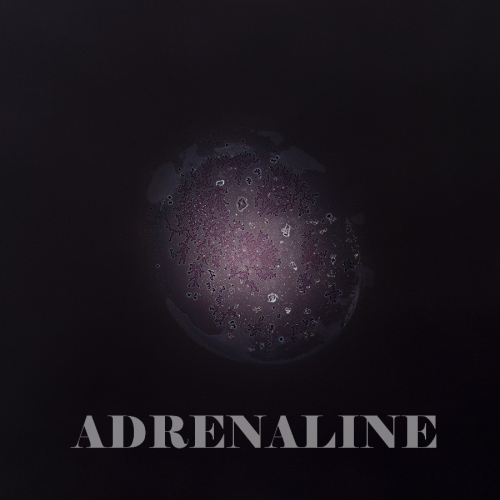
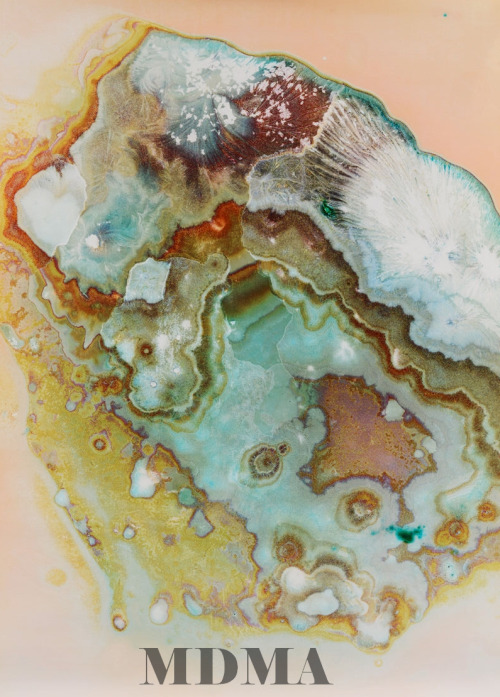


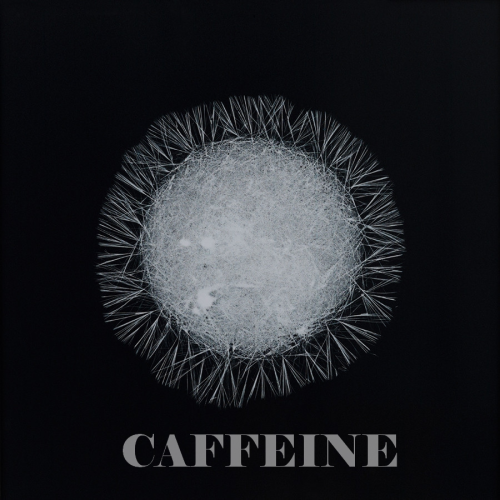


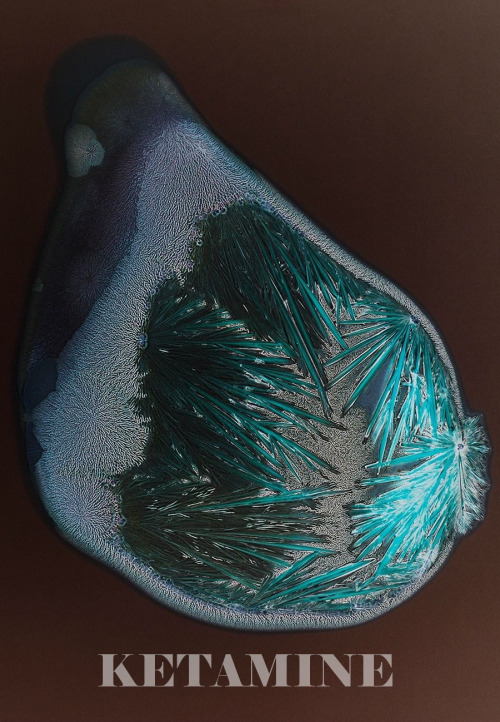

Drugs Under The Microscope
More Posts from The-sleepy-chemist and Others
“i should drink more water” i remind myself, halfway through my fifth coffee

Sea Slug - Phyllodesmium serratum
Phyllodesmium serratum (Nudibranchia - Facelinidae) is a colorful species of sea slug known from Japan, Philippines and Australia, whose color is dependent on the color of the food it is eating.
As seen in the photo, it has branched digestive glands that ramify into the cerata and dorsal surface of the body.
Although one of the most interesting adaptations found in this genus is the widespread participation in a symbiotic relationship with photosynthetic dinoflagellates (zooxanthellae), P. serratum does not have such a relationship, and is unusual in feeding on a wide variety of octocorals.
References: [1] - [2] - [3]
Photo credit: ©Klaus Stiefel (CC BY-NC 2.0) | Locality: Kurnell, Sydney, New South Wales, Australia (2013)

Happiness Molecule

Viscosity can have a notable effect on droplet impacts. This poster demonstrates with snapshots from three droplet impacts. The blue drops are dyed water, and the red ones are a more viscous water-glycerol mixture. When the two water droplets impact, a skirt forms between them, then spreads outward into a sheet with a thicker, uneven rim before retracting. The second row shows a water droplet impacting a water-glycerol droplet. The less viscous water droplet deforms faster, wrapping around and mixing into the other drop before rebounding in a jet. The last row switches the impacts, with the more viscous drop falling onto the water. As in the previous case, the water deforms faster than the water-glycerol. The two mix during spreading and rebound slower. In the last timestep shown, the droplet is still contracting, but it does rebound as a jet thereafter. (Image credit: T. Fanning et al.)


Aurora - Nutirwik Creek, Brooks Range, Alaska | by Fred Wasmer


The Oldest Ancestor of Modern Birds Has Been Found in China
Ever since the birdlike dinosaur Archaeopteryx was first discovered in 1861, paleontologists have tried to decipher the evolutionary origins of modern birds—the only surviving descendants of the dinosaurs.
Now, paleontologists based out of the Chinese Academy of Sciences (CAS) have reached a new milestone in this quest. The CAS team has discovered the oldest fossils from the Ornithuromorpha group of dinosaurs, the common ancestor of all modern bird species.
The two specimens date back 130 million years to the Early Cretaceous period, when pterosaurs still dominated the skies. They belong to a new species named Archaeornithura meemannae, a feathered wading bird that lived in what is now northeastern China. The CAS team, led by paleontologist Min Wang, published a detailed analysis of the new specimens today in Nature Communications.
Continue Reading.
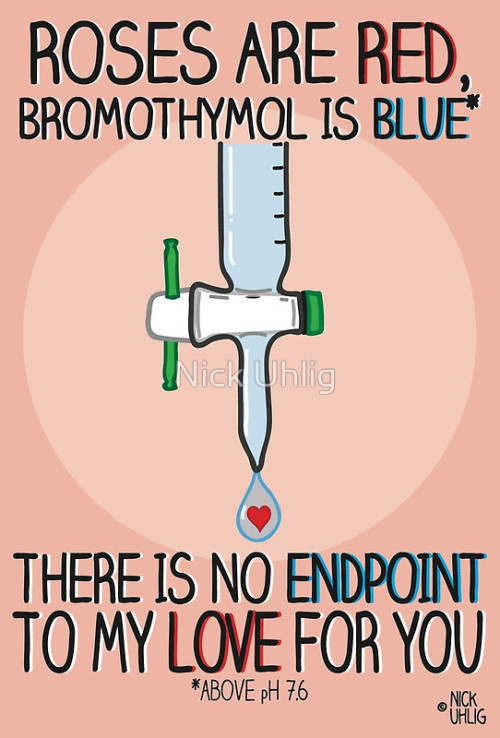
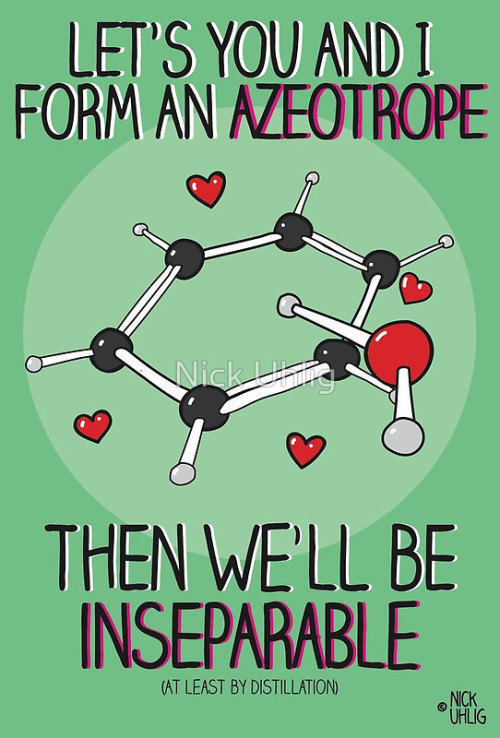
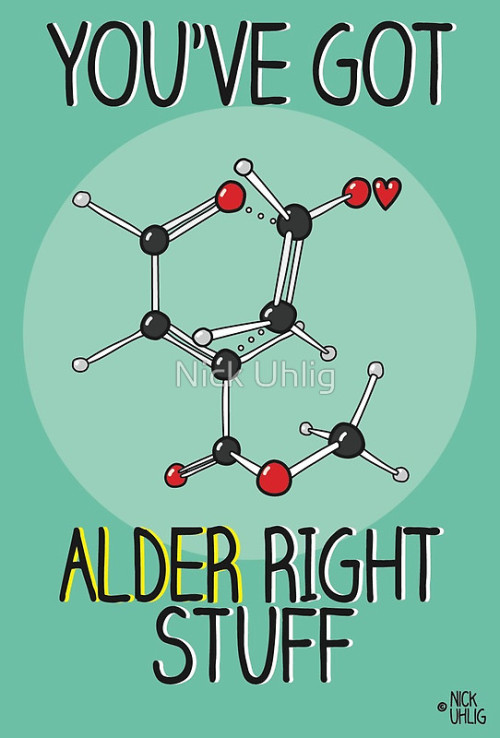

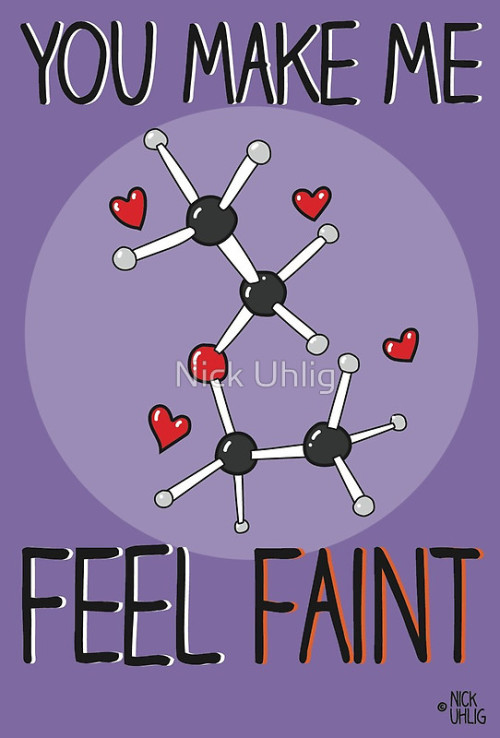
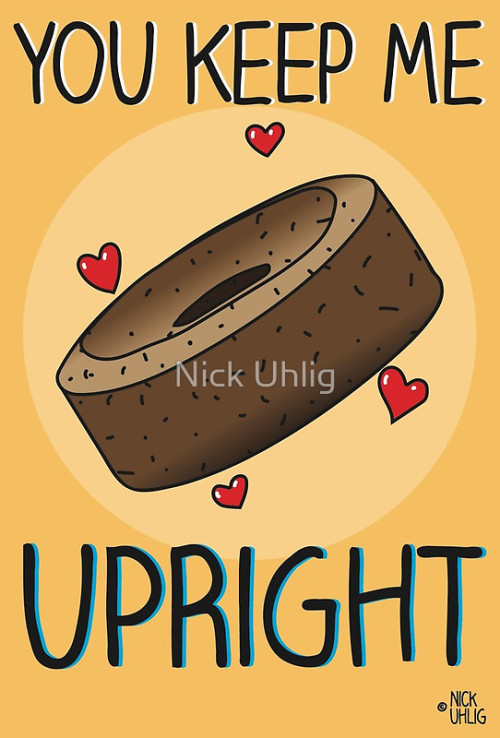
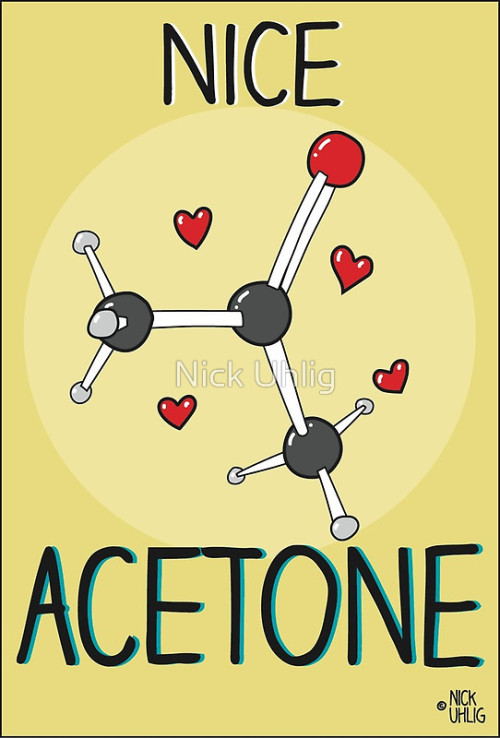
Chemistry Valentine’s Cards by Nick Uhlig.
Psychology: Why do people do the thing?
Sociology: How do people who do the thing interact with other people who do the thing?
Anthropology: Who else has done/is doing the thing and where are they?
Philosophy: What is the meaning of the thing? Where did the thing come from?
Why Sequencing DNA in Space is a Big Deal
… And How You Can Talk to the Scientists Who Made It Happen

Less than one month ago, DNA had never been sequenced in space. As of today, more than one billion base pairs of DNA have been sequenced aboard the International Space Station, Earth’s only orbiting laboratory. The ability to sequence the DNA of living organisms in space opens a whole new world of scientific and medical possibilities. Scientists consider it a game changer.

NASA astronaut Kate Rubins, who has a background in genomics, conducted the sequencing on the space station as part of the Biomolecule Sequencer investigation. A small, commercial, off-the-shelf device called MinION (min-EYE-ON), manufactured by Oxford Nanopore Technologies in the UK, was used to sequence the DNA of bacteria, a virus and rodents. Human DNA was not sequenced, and there are no immediate plans to sequence human DNA in space.

(Image Credit: Oxford Nanopore Technologies)
The MinION is about the size of a candy bar, and plugs into a laptop or tablet via USB connection, which also provides power to the device. The tiny, plug and play sequencer is diminutive compared to the large microwave-sized sequencers used on Earth, and uses much less power. Unlike other terrestrial instruments whose sequencing run times can take days, this device’s data is available in near real time; analysis can begin within 10-15 minutes from the application of the sample.

Having real-time analysis capabilities aboard the space station could allow crews to identify microbes, diagnose infectious disease and collect genomic and genetic data concerning crew health, without having to wait long periods of time to return samples to Earth and await ground-based analysis.
The first DNA sequencing was conducted on Aug. 26, and on Sept. 14, Rubins and the team of scientists back at NASA’s Johnson Space Center in Houston hit the one-billionth-base-pairs-of-DNA-sequenced mark.

Have more questions about how the Biomolecule Sequencer works, or how it could benefit Earth or further space exploration? Ask the team of scientists behind the investigation, who will be available for questions during a Reddit Ask Me Anything on /r/science on Wednesday, Sept. 29 at 2 p.m. EDT.
The participants are:
Dr. Aaron Burton, NASA Johnson Space Center, Planetary Scientist and Principal Investigator
Dr. Sarah Castro-Wallace, NASA Johnson Space Center, Microbiologist and Project Manager
Dr. David J. Smith, NASA Ames Research Center, Microbiologist
Dr. Mark Lupisella, NASA Goddard Space Flight Center, Systems Engineer
Dr. Jason P. Dworkin, NASA Goddard Space Flight Center, Astrobiologist
Dr. Christopher E. Mason, Weill Cornell Medicine Dept. of Physiology and Biophysics, Associate Professor
-
 bogblul reblogged this · 2 months ago
bogblul reblogged this · 2 months ago -
 zlayabylka liked this · 2 months ago
zlayabylka liked this · 2 months ago -
 parkandride2 liked this · 2 months ago
parkandride2 liked this · 2 months ago -
 thedarkhierophant liked this · 2 months ago
thedarkhierophant liked this · 2 months ago -
 dailymusemaniac reblogged this · 2 months ago
dailymusemaniac reblogged this · 2 months ago -
 fizermusic liked this · 2 months ago
fizermusic liked this · 2 months ago -
 claudiofo liked this · 2 months ago
claudiofo liked this · 2 months ago -
 iamwalrus01 liked this · 2 months ago
iamwalrus01 liked this · 2 months ago -
 stephanmacro reblogged this · 2 months ago
stephanmacro reblogged this · 2 months ago -
 ssolson8550 liked this · 2 months ago
ssolson8550 liked this · 2 months ago -
 beehigh-n-butthead reblogged this · 2 months ago
beehigh-n-butthead reblogged this · 2 months ago -
 charvez-arradeaux liked this · 2 months ago
charvez-arradeaux liked this · 2 months ago -
 tisthefairy11-blog liked this · 2 months ago
tisthefairy11-blog liked this · 2 months ago -
 thetripbeginswithakiss reblogged this · 2 months ago
thetripbeginswithakiss reblogged this · 2 months ago -
 waittheydontloveyou liked this · 2 months ago
waittheydontloveyou liked this · 2 months ago -
 lemonwaterlover liked this · 2 months ago
lemonwaterlover liked this · 2 months ago -
 qs-prn liked this · 2 months ago
qs-prn liked this · 2 months ago -
 thethirdman8 reblogged this · 2 months ago
thethirdman8 reblogged this · 2 months ago -
 mmadworld liked this · 2 months ago
mmadworld liked this · 2 months ago -
 themarvelousmel reblogged this · 3 months ago
themarvelousmel reblogged this · 3 months ago -
 drifting-past reblogged this · 3 months ago
drifting-past reblogged this · 3 months ago -
 vistadreams liked this · 3 months ago
vistadreams liked this · 3 months ago -
 nom0n3y-noh0n3y liked this · 3 months ago
nom0n3y-noh0n3y liked this · 3 months ago -
 10-09-1995 reblogged this · 3 months ago
10-09-1995 reblogged this · 3 months ago -
 10-09-1995 liked this · 3 months ago
10-09-1995 liked this · 3 months ago -
 peachypink45 liked this · 3 months ago
peachypink45 liked this · 3 months ago -
 itsbeyondgood liked this · 3 months ago
itsbeyondgood liked this · 3 months ago -
 yes-brandeebleueaurelie reblogged this · 3 months ago
yes-brandeebleueaurelie reblogged this · 3 months ago -
 daanise liked this · 3 months ago
daanise liked this · 3 months ago -
 plussmlf liked this · 3 months ago
plussmlf liked this · 3 months ago -
 trapped-inside-my-head247 reblogged this · 3 months ago
trapped-inside-my-head247 reblogged this · 3 months ago -
 trapped-inside-my-head247 liked this · 3 months ago
trapped-inside-my-head247 liked this · 3 months ago -
 pleasemerci liked this · 3 months ago
pleasemerci liked this · 3 months ago -
 spaceminded liked this · 3 months ago
spaceminded liked this · 3 months ago -
 000-um liked this · 3 months ago
000-um liked this · 3 months ago -
 a-heart-like-a-sparrow liked this · 3 months ago
a-heart-like-a-sparrow liked this · 3 months ago -
 cor-serpentis liked this · 3 months ago
cor-serpentis liked this · 3 months ago -
 tsaras-stuff liked this · 3 months ago
tsaras-stuff liked this · 3 months ago -
 urfavdevil liked this · 3 months ago
urfavdevil liked this · 3 months ago -
 justpassivebaby liked this · 3 months ago
justpassivebaby liked this · 3 months ago -
 chokeyousoftly reblogged this · 3 months ago
chokeyousoftly reblogged this · 3 months ago -
 emptyliqourbottles reblogged this · 3 months ago
emptyliqourbottles reblogged this · 3 months ago -
 vanillaspicekittens liked this · 3 months ago
vanillaspicekittens liked this · 3 months ago -
 2nez liked this · 3 months ago
2nez liked this · 3 months ago -
 mommyneedsacoke reblogged this · 3 months ago
mommyneedsacoke reblogged this · 3 months ago -
 mommyneedsacoke liked this · 3 months ago
mommyneedsacoke liked this · 3 months ago -
 royallizalfos liked this · 3 months ago
royallizalfos liked this · 3 months ago
60 posts